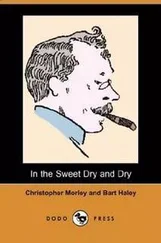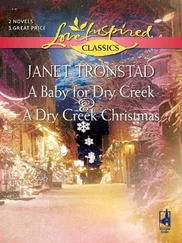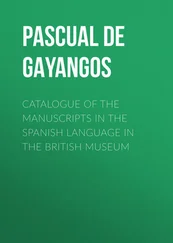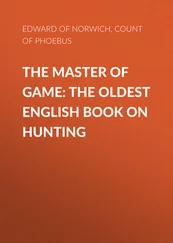1 ...7 8 9 11 12 13 ...19 Another case of a runic dry-point inscriptiondry-pointrunesdry-pointinscriptions whose linguistic status as OE is uncertain and whose inner connection to the base text remains unclear is presented by St. Gallen, Stiftsbibliothek 188St. Gallen, StiftsbibliothekMS 188. Nievergelt (2009a: 65–68) describes a runic dry-point inscription that he deciphers as ᛖᚳᚨᚹ, illustrated by a photographic picture of the entry from the bottom margin of p. 77, shot in grazing light conditions (2009a: 67). According to Nievergelt, the incision is very neat and distinct and the reading of the individual runes is quite certain. Since the second rune presupposes futhorc usage,dry-pointfuthorc inscriptions the inscription is probably to be interpreted as “ECÆW”, but Nievergelt cautions that the status of runic usage in St. Gallen is difficult to assess and hence the third rune could possibly have been meant to represent A and the fourth rune might have been meant to represent thorn rather than wynn . In any case a L. or OHG interpretation of the inscription seems unlikely out of graphematic and phonological considerations. Due to the fact that other St. Gallen MSS are known to contain OE (in one case, St. Gallen, Stiftsbibliothek 1394, Part IXSt. Gallen, StiftsbibliothekMS 1394, Part IX[32/K:A44], even in dry-point), Nievergelt is inclined to interpret the inscription as OE ecg-ǣ(w) , a supposed hapax legomenon composed of ecg “sword” and ǣ(w) “law” referring to the text of MAXIMUS TAURINENSIS’s Homily 114 on the same MS page concerned with military service. No specific lemma in the text can be tied to the inscription, so the runic entry would have to be understood as a very general comment on the text as a whole.
Another runic dry-point entry,dry-pointinscriptions which may represent a general comment on the base text, is reported from the “Blickling Psalter” (New York, Pierpont Morgan Library 776New York, Pierpont Morgan Library 776 [G:862]) by Pulsiano (2002: 190):7
In the Blickling Psalter, in the bottom margin of f. 82r, appear scratches in a large, sprawling hand, easily passed over, but which appropriately spell in runes the word “psalter” (as ?saltrie ).
Unfortunately, Pulsiano does not provide a precise description of his find or a drawing of this interesting entry. The linguistic status of this entry is difficult to assess and a detailed runological examination would be in order. It has to be assumed that the initial question mark in Pulsiano’s transliteration is meant to indicate at least one further undecipherable rune, for which a runic p would be a likely candidate.8 Syncope of the medial vowel (i.e. - tr -) is not compatible with L. psalterium , and also in OE it is attested only once in the DOEC 2009, in the form saltre (dat. sg.) from the very late “Eadwine Psalter”,Cambridge, Trinity College LibraryR. 17. 19 glossing L. psalterio (Psalm 143, referring to the instrument, not to the Book of Psalms). Both syncope of the medial vowel and the ending -ie are reminiscent of ME forms (cf. MED “sautrī(e (n.)”), however the - l - is not typical for ME, where forms in - u - or - w - dominate by far, though the former does occur. The lack or presence of initial p- cannot help in dating the entry, either, although forms with initial p- are more common in OE than in ME. Lacking a runological dating, I am inclined to assume that this dry-point runic entry may be of a late date, perhaps even eME.
Derolez (1954: 8) reports dry-point MS runesdry-pointrunesdry-pointfuthorc inscriptions from London, British Library Cotton Domitian A. ixLondon, British LibraryCotton Domitian A. ix [K:151], f. 11 v.10 In the originally blank space below a tabular representation of the Anglo-Saxon futhorc, runic dry-point f u þ o (?) , runic dry-point a b c d e f g h i k l m n o p and a solitary runic dry-point g have been added in a “rather careless way”, as Derolez puts it. The runes were probably inspired by the runes given on the page. The date of their entry is unknown, but they must have been entered before the antiquary Robert Talbot (1505[?]–1558) added explanations of the rune names in the same blank space in sec. xvi. The fact that Talbot wrote right across the dry-point writing may point either to the possibility that he did not see the dry-point runes or that he chose to ignore them. They are easily visible in the facsimile given by Derolez (1954: Pl. 1); in fact, they are so easily visible that one may wonder whether their edges have been smudged or whether they were originally entered in (now faded) ink, pencil or crayon, leaving a dry-point-like appearance.Bern, Burgerbibliothek Cod. 20711
Kassel, UB 2° Ms. theol. 65Kassel, Universitätsbibliothek2° Ms. theol. 65 [13/K:121*] also features an alphabet – consisting of 20 symbols, mainly in Anglo-Saxon runes, but also including some non-runic symbols – representing the letters a to u , scratched into its back cover.dry-pointalphabetical inscriptions12 The MS also features an interesting runic dry-point inscription on its front cover that seems to mix runic and Roman writing. It is probably meant to give a terse indication of the MS’s contents as the name iosepi is entered three times (once only partially), referring to PSEUDO-HEGESIPPUS, whose De bello Iudaico is contained in the MS.13 The MS itself was written in (Northern?) Italy, sec. vi, and presumably passed through England to Fulda, probably in connection with Boniface’s missionary activities. Wiedemann (1994: 96) mentions a date sec. viii/ix for the runic inscriptions. The MS also features some of the oldest OE dry-point glosses that we know, which is why the MS is included in the Catalogue below.
For some reported dry-point material, there is no edition available that I am aware of. Ó Cróinín mentions dry-point glosses in Berlin, Staatsbibliothek zu Berlin – Preussischer Kulturbesitz Ms. Hamilt. 553Berlin, Staatsbibliothek zu Berlin – Preussischer KulturbesitzMs. Hamilt. 553 [G:790] – an illuminated Roman Psalter, nicknamed “Salaberga Psalter”, originating from Northumbria, perhaps Lindisfarne, sec. viii 1(Gneuss 2001: 118). All the information that is available to me at the moment is given in Ó Cróinín (1994: 16): “There are a few dry-point glosses (fol. 12v lower margin; 13vb small-cap , between tramlines; 35v centre; not noted by Lowe [( CLA 8: 1048)] or Boese [(1966: 270)], but they do not reveal anything of the manuscript’s early history.” Unfortunately, I could not find any further information on the subject. Since the MS originates from Anglo-Saxon England, there is at least the possibility that this material might be OE, although Ó Cróinín’s phrasing would not suggest it.14
James (1912: 316) reports “an old scribble in large letters made with a dry point” on f. 1 rof Cambridge, Corpus Christi College 422Cambridge, Corpus Christi CollegeMS 422 [K:70] without providing a reading. Some letter forms of the scribble are visible in the digital facsimile provided by “Parker Library on the web”.15 The MS containing Salomon and Saturn , sec. x med., and a missal, sec. xi med., is described by Ker (1957: 119–121 [no. 70]), but he does not mention the scribble, which may or may not be an indication that the scribble is in L. Its position and size suggest that it is probably not a text gloss.
2.3.3 Dry-Point Annotations to the “Old English Bede”dry-pointannotationsOld English BedeBedaEcclesiastical History of the English People
Wallis (2013a, 2013b) presents an interesting case of dry-point annotations in a copy of the OE translation of BEDA’s Ecclesiastical History of the English People preserved in Oxford, Corpus Christi College 279B, Part IIOxford, Corpus Christi CollegeMS 279B, Part II [K:354] (O). This early 11 th-c. copy of the “Old English Bede” was revised by a corrector – presumably of sec. xi – who added short “interventions” to the OE text,dry-pointemendations usually consisting merely of a few letters added in dry-point, of which Wallis records “at least eighty-nine in Book 3” (2013b: 161). Wallis makes a careful attempt at classifying the different types of relationship between the dry-point annotations and the original text.
Читать дальше












